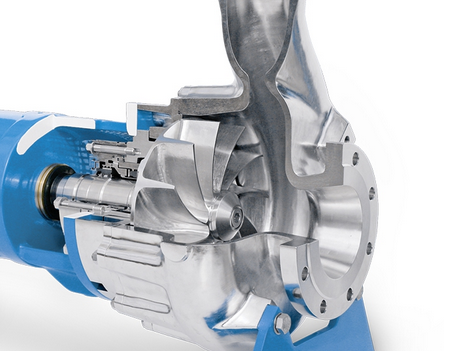Vortex Optimization of Centrifugal Pump
Vortexer optimization of centrifugal pumps is one of the important means to improve pump performance and efficiency. As a key component of a centrifugal pump, the vortexer's structure and performance directly affect the flow, lift, efficiency and stability of the pump. Below is a detailed discussion of centrifugal pump vortexer optimization:
1. The function and influence of vortex device
The vortexer is mainly located at the inlet of the centrifugal pump. Its function is to improve the hydraulic efficiency of the pump by changing the flow state of the fluid and reducing the impact and vortex loss when the fluid enters the impeller. Unreasonable design or reduced performance of the vortexer will lead to non-uniformity and increased vortex loss when the fluid enters the impeller, thereby affecting the overall performance of the pump.
2. Direction of vortex device optimization
Structural optimization design
Reduce the radial gap: By improving the structure of the vortexer and reducing the radial gap between the vortexer and the inlet pipe diameter, the vortex loss of the fluid in the gap can be reduced and the efficiency of the pump can be improved.
Optimized shape design: The shape design of the vortexer has a significant impact on the fluid flow state. By optimizing the shape of the vortexer, such as adopting a streamlined design, the fluid can enter the impeller more smoothly and reduce impact and vortex losses.
Material selection
Choosing wear-resistant and corrosion-resistant materials to make the vortexer can extend the service life of the vortexer and reduce performance degradation caused by wear or corrosion.
Processing accuracy
Improving the machining accuracy of the vortexer and ensuring that the fitting clearance and surface roughness between components meet the design requirements can reduce fluid leakage and eddy current losses caused by machining errors.

3. Specific measures for vortexer optimization
Numerical Simulation and Simulation
Using computational fluid dynamics (CFD) and other numerical simulation techniques to simulate and analyze the flow field of the vortexer can intuitively understand the flow state of the fluid in the vortexer and provide a scientific basis for the optimal design of the vortexer.
Experimental verification
After completing the numerical simulation, the actual effect of the optimized design of the vortexer was verified through experiments. Evaluate the effectiveness of the vortexer optimization by comparing the pump performance parameters (such as flow, head, efficiency, etc.) before and after optimization.
Continuous improvement
Optimization of vortexers is an ongoing process. During use, the performance of the vortexer should be regularly tested and evaluated to find and solve problems in a timely manner. At the same time, based on user feedback and market demand, the design of the vortexer is continuously optimized to meet higher performance requirements.




